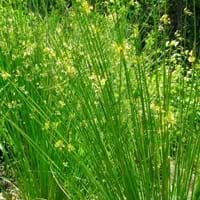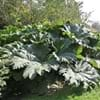Life Span
Perennial
Perennial
Type
Perennial
Sedge or Rush
Origin
Hybrid origin
World/Pandemic, North America, Europe, Russia/Siberia, Africa, Asia
Types
Victoria Rhubarb
Colorado Red Rhubarb
Turkish Rhubarb
austrocalifornicus , effusus , laxus , pacificus , solutus
Habitat
gardens, Grassland, Humid climates, Tropical regions, Urban areas
All sorts of environments, Banks, ditches, marshes, Shores of rivers or lakes
USDA Hardiness Zone
5-8
6-9
Sunset Zone
2b, 3a, 3b, 4, 5, 6, 7, 14, 15, 16, 17
H1, 1a, 1b, 2a, 2b, 3a, 3b, 4, 5, 6, 7, 8, 9, 10, 11, 12, 13, 14, 15, 16, 17, 18, 19, 20, 21, 22, 23, 24
Habit
Clump-Forming
Clump-Forming
Flower Color
Light Pink
Brown
Flower Color Modifier
Not Available
Bicolor
Fruit Color
Burgundy
Non Fruiting Plant
Leaf Color in Spring
Green, Dark Red
Green
Leaf Color in Summer
Green, Dark Red
Green
Leaf Color in Fall
Green, Dark Red
Green
Leaf Color in Winter
Light Green
Green, Tan, Sandy Brown
Leaf Shape
Compound
Long hair-like leaves
Plant Season
Spring, Summer, Fall
Spring, Summer, Fall, Winter
Sunlight
Full Sun, Partial Sun
Full Sun, Partial Sun
Type of Soil
Clay, Loam
Clay, Loam, Sand
The pH of Soil
Acidic, Neutral, Alkaline
Acidic, Neutral
Soil Drainage
Average
Poorly Drained
Bloom Time
Summer, Late Summer
Early Summer, Summer, Late Summer, Early Fall
Tolerances
Drought
Drought
Where to Plant?
Ground
Ground
How to Plant?
Stem Planting
Divison, reseeds
Plant Maintenance
Medium
Medium
Watering Requirements
Do Not over Water, Requires regular watering, Use Mulches to help prevent water loss during hot and windy weather, Water Deeply
Does not require regular watering
In Summer
Lots of watering
Lots of watering
In Spring
Moderate
Moderate
In Winter
Average Water
Average Water
Soil pH
Acidic, Neutral, Alkaline
Acidic, Neutral
Soil Type
Clay, Loam
Clay, Loam, Sand
Soil Drainage Capacity
Average
Poorly Drained
Sun Exposure
Full Sun, Partial Sun
Full Sun, Partial Sun
Pruning
Remove damaged leaves, Remove dead branches, Remove dead leaves
Prune to control growth, Remove damaged leaves, Remove dead branches, Remove dead leaves
Fertilizers
All-Purpose Liquid Fertilizer
All-Purpose Liquid Fertilizer
Pests and Diseases
Red blotch
Free of serious pests and diseases
Plant Tolerance
Drought
Drought
Flowers
Showy
Insignificant
Flower Petal Number
Not Available
Single
Foliage Texture
Coarse
Fine
Foliage Sheen
Glossy
Glossy
Attracts
Not Available
Bumblebees, Flying insects
Allergy
Skin irritation
Unknown
Aesthetic Uses
Showy Purposes
Informal Hedge, Woodland margins
Beauty Benefits
Not Available
Not Available
Environmental Uses
Air purification
Air purification
Medicinal Uses
Not Available
No Medicinal Use
Part of Plant Used
Whole plant
Not Available
Other Uses
Culinary use, Used as Ornamental plant
woven into the covering of tatami mats
Used As Indoor Plant
No
No
Used As Outdoor Plant
Yes
Yes
Garden Design
Feature Plant, Mixed Border
Bog Garden, Container, Mixed Border, Water Gardens
Botanical Name
RHEUM 'Ace of Hearts'
JUNCUS effusus
Common Name
Ace of Hearts Ornamental Rhubarb, Ornamental Rhubarb
Soft Rush
In Hindi
सजावटी प्रकार का फल
Soft Rush
In German
Ornamental Rhabarber
Soft Rush
In French
rhubarbe ornementale
Soft Rush
In Spanish
Ornamental de ruibarbo
Soft Rush
In Greek
καλλωπιστικά Ραβέντι
Soft Rush
In Portuguese
ornamental ruibarbo
Soft Rush
In Polish
ozdobne Rabarbar
Soft Rush
In Latin
decentius Rhubarb
Soft Rush
Phylum
Tracheophyta
Magnoliophyta
Class
Not Available
Liliopsida
Order
Caryophyllales
Poales
Family
Polygonaceae
Juncaceae
Clade
Angiosperms, Core eudicots, Eudicots
Angiosperms, Commelinids, Monocots
Tribe
Not Available
Not Available
Subfamily
Not Available
Not Available
Number of Species
Not Available
Season and Care of Ornamental Rhubarb and Common Rush
Season and care of Ornamental Rhubarb and Common Rush is important to know. While considering everything about Ornamental Rhubarb and Common Rush Care, growing season is an essential factor. Ornamental Rhubarb season is Spring, Summer and Fall and Common Rush season is Spring, Summer and Fall. The type of soil for Ornamental Rhubarb is Clay, Loam and for Common Rush is Clay, Loam, Sand while the PH of soil for Ornamental Rhubarb is Acidic, Neutral, Alkaline and for Common Rush is Acidic, Neutral.
Ornamental Rhubarb and Common Rush Physical Information
Ornamental Rhubarb and Common Rush physical information is very important for comparison. Ornamental Rhubarb height is 71.10 cm and width 81.30 cm whereas Common Rush height is 45.70 cm and width 61.00 cm. The color specification of Ornamental Rhubarb and Common Rush are as follows:
Ornamental Rhubarb flower color: Light Pink
Ornamental Rhubarb leaf color: Green and Dark Red
Common Rush flower color: Brown
- Common Rush leaf color: Green
Care of Ornamental Rhubarb and Common Rush
Care of Ornamental Rhubarb and Common Rush include pruning, fertilizers, watering etc. Ornamental Rhubarb pruning is done Remove damaged leaves, Remove dead branches and Remove dead leaves and Common Rush pruning is done Prune to control growth, Remove damaged leaves, Remove dead branches and Remove dead leaves. In summer Ornamental Rhubarb needs Lots of watering and in winter, it needs Average Water. Whereas, in summer Common Rush needs Lots of watering and in winter, it needs Average Water.





